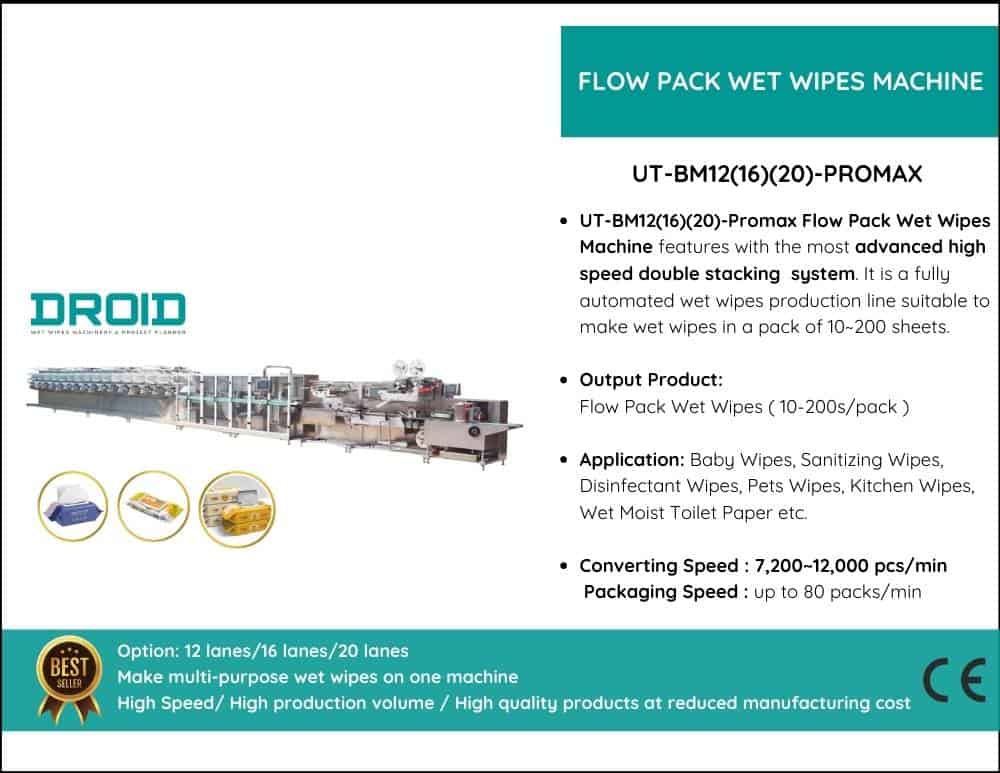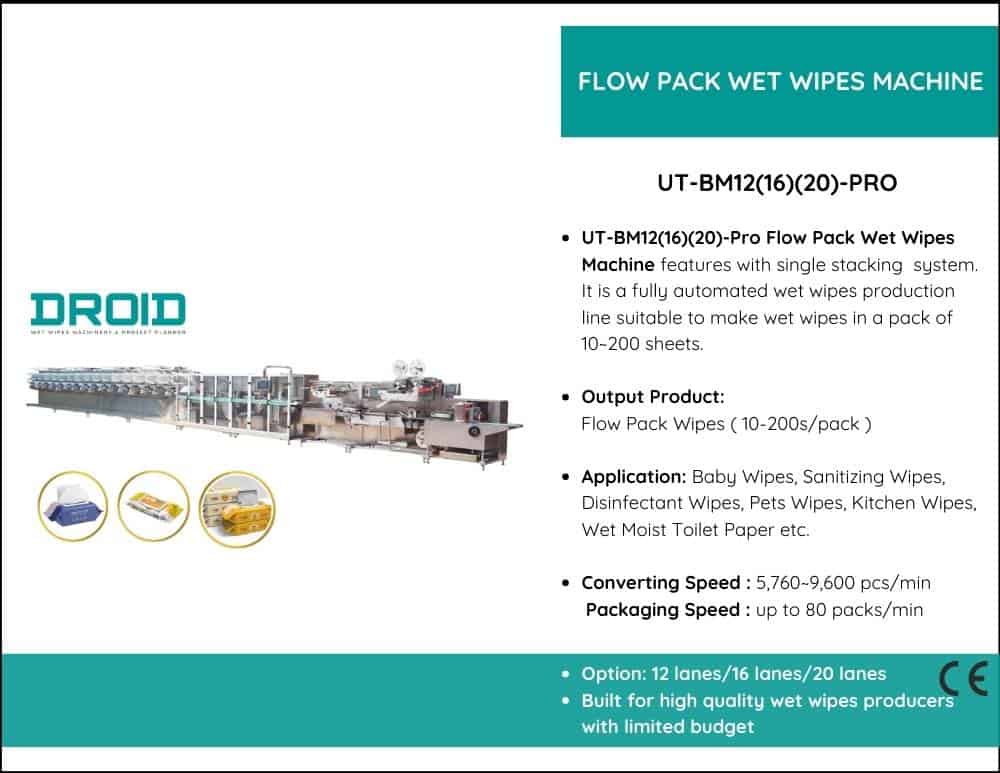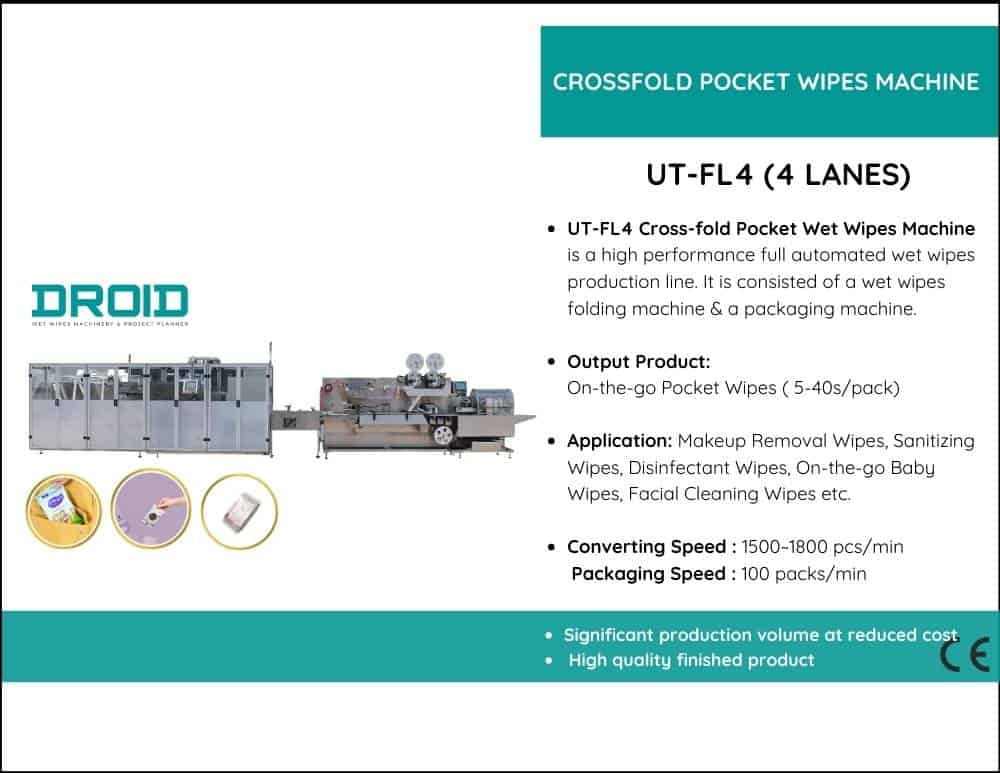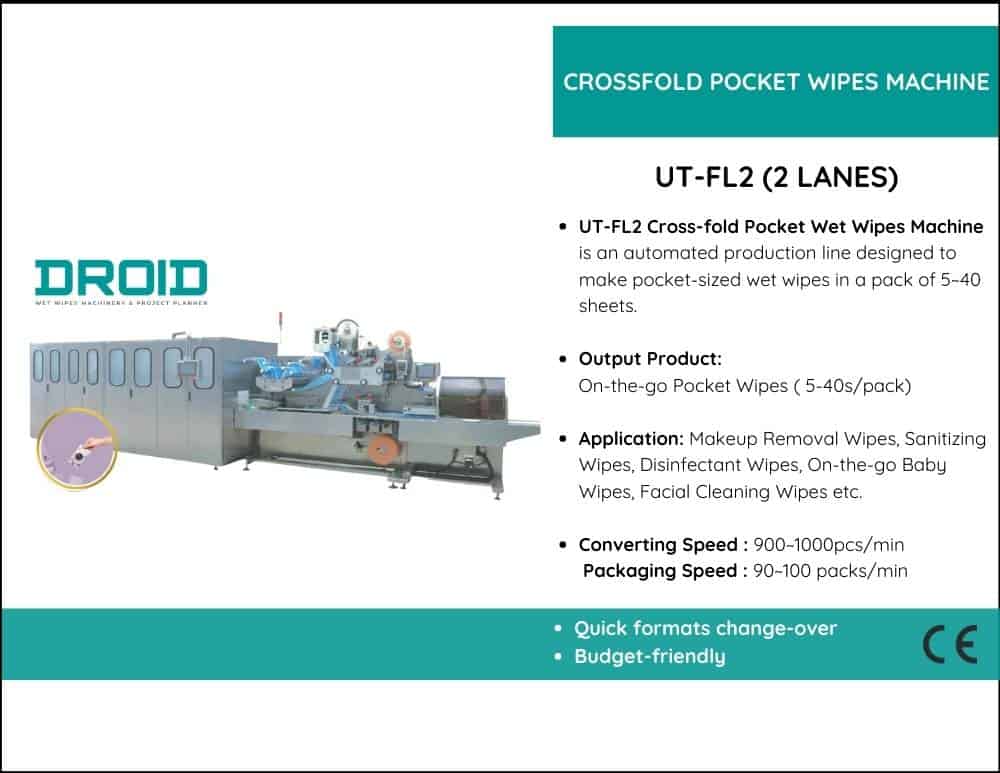Purchasing used wet wipe equipment may save a significant amount of money and allow for rapid market entry, but it also presents certain dangers and difficulties. Used machinery may require more frequent inspections, upkeep, and modifications to operate effectively than new machinery, which is typically covered by manufacturer warranties and performance guarantees. It’s essential to understand the potential disadvantages of purchasing used wet wipe equipment and how to mitigate these risks to make an informed decision. The primary obstacles to buying used equipment in this sector are outlined below.
1. Limited or nonexistent technical support and warranty
The lack of a manufacturer’s guarantee is one of the most significant disadvantages of purchasing second-hand equipment. Buyers of new equipment typically receive a warranty that covers replacements, repairs, and technical assistance for a specified period. Nevertheless, used machinery often lacks this kind of insurance, so if anything goes wrong, the buyer has full responsibility for the expense of repairs.
Additionally, finding technical help for older devices can be challenging, as many manufacturers prioritize support for their newest models. Businesses may need to rely on internal maintenance teams or outside professionals if the original manufacturer no longer offers support for used equipment. This may result in increased operating expenses and unplanned downtime.
2. Possible Damage Resulting in Regular Failures
Used wet wipes machines may have been around for several years, causing wear and tear from constant usage. Degradation of parts, including motors, belts, cutting blades, and electrical systems, may result in frequent problems. These problems may worsen without adequate maintenance, leading to costly malfunctions and production disruptions.
Before purchasing any second-hand equipment, a thorough inspection is necessary to mitigate this risk. To assess the machine’s condition, buyers should request thorough maintenance records and, if feasible, consult with an expert technician. Avoiding devices that require costly maintenance can be achieved by anticipating potential trouble spots.
3. Incompatibilities with Contemporary Production Needs
The wet wipes market is constantly evolving, as evidenced by the frequent introduction of new laws, materials, and packaging specifications. Modern manufacturing demands, including the use of biodegradable materials, environmentally friendly packaging, or sophisticated automation systems, may be too much for older machinery to handle. Businesses may struggle to meet customer expectations and industry standards if their used equipment is incompatible with the latest raw materials or manufacturing methods.
Buyers should confirm that a used wet wipes machine satisfies current production and compliance requirements before making a purchase. To ensure compatibility, the machine may occasionally require an upgrade or retrofit; however, these modifications may increase the total cost of the investment.
4. Difficulties with Higher Maintenance and Spare Parts Availability
The availability of replacement parts is often one of the most overlooked factors when purchasing used equipment. Finding new components for a discontinued or outdated model may be costly and challenging. Custom parts may be required for specific older equipment, which would further increase maintenance expenses and downtime.
Before completing a transaction, businesses should investigate the availability of replacement parts. To determine whether replacement parts are readily available, consult with the manufacturer, outside vendors, or maintenance service providers. To prevent future interruptions, it is also a good idea to stock up on necessary replacement parts at the time of purchase.
5. Unexpected Expenses of Renovations and Repairs
A used wet wipes machine’s initial cost could sound alluring, but purchasers also need to account for possible maintenance and repair expenses. To increase efficiency, specific machines may require significant improvements, including replacing worn-out parts, adjusting settings, or upgrading software. These extra costs might sometimes outweigh the savings from purchasing used.
Before investing in second-hand equipment, a cost-benefit analysis should be conducted. The price of brand-new equipment should be compared to the overall cost of ownership, which includes maintenance and adjustments. In certain circumstances, purchasing a well-maintained second-hand machine with minimal service requirements at a slightly higher initial cost may be preferable to purchasing severely worn-out equipment at a lower price.
6. Inadequate Operational History and Documentation
The operating history of a machine may provide important information about its dependability and efficiency. Buyers of used wet wipes machines, however, may not always get all the necessary paperwork, such as service histories, maintenance records, and technical manuals. It is difficult to determine how effectively the equipment was maintained and if it has any recurring problems without this information.
Buyers should request as much paperwork as possible from the vendor to mitigate this risk. Setting up a test run or a professional examination can help assess the machine’s current state if comprehensive data are not available.
7. The Potential Impact of Outdated Technology on Productivity
The manufacturing industry is experiencing a rapid technological evolution, with modern machinery delivering increased production rates, enhanced automation, and improved energy efficiency. Older wet wipe machines could still work well, but they might not be as quick, accurate, or effective as their more recent counterparts. This may result in increased operational inefficiencies, increased labor expenses, and decreased productivity.
Companies should determine whether the technology of older equipment fits with their production objectives. To stay competitive in the market, updating may be required if the equipment lacks crucial characteristics such as digital monitoring systems, computerized quality control, or contemporary cutting mechanisms.
8. Unexpected Difficulties with Transportation and Installation
Logistically, moving and setting up old equipment may be challenging. Second-hand machines often need the buyer to make arrangements for shipping, unloading, and assembly, in contrast to new machines that come with installation services offered by the manufacturer. This procedure may be complicated, particularly if the equipment is big, fragile, or needs special care.
Furthermore, some second-hand machinery may need adjustments to be integrated into an existing manufacturing line. To prevent unforeseen expenditures, buyers should factor in possible shipping, site preparation, and installation charges.
9. Fewer Options for Financing
For the purchase of modern industrial equipment, several leasing businesses and financial institutions offer attractive financing options. Nevertheless, there can be fewer or more expensive financing choices available for used equipment. Due to potential depreciation and maintenance issues, several banks and lenders view second-hand equipment as a riskier investment.
Businesses can explore various alternatives if financing is necessary, including equipment finance experts who are knowledgeable about the value of used industrial machinery. As an alternative, negotiating flexible payment terms with the seller may alleviate the financial strain.
Purchasing a used wet wipe machine might be a cost-effective choice, but there are several issues to consider. Before making a purchase, wet wipe manufacturers must evaluate all factors, including potential wear and tear, the availability of replacement parts, and the obsolescence of technology. One way to reduce risks and ensure a successful investment is to conduct comprehensive inspections, investigate the availability of replacement parts, and verify conformity with current manufacturing standards. Businesses can optimize the benefits of purchasing second-hand equipment while avoiding costly mistakes by adopting a strategic approach.








